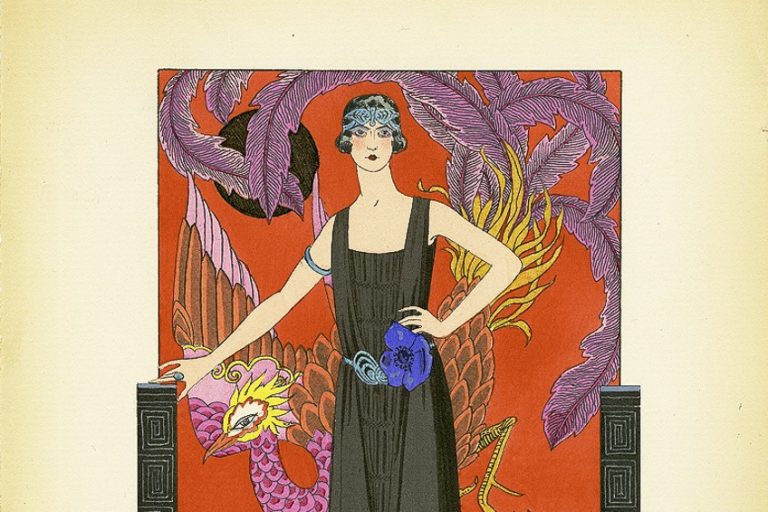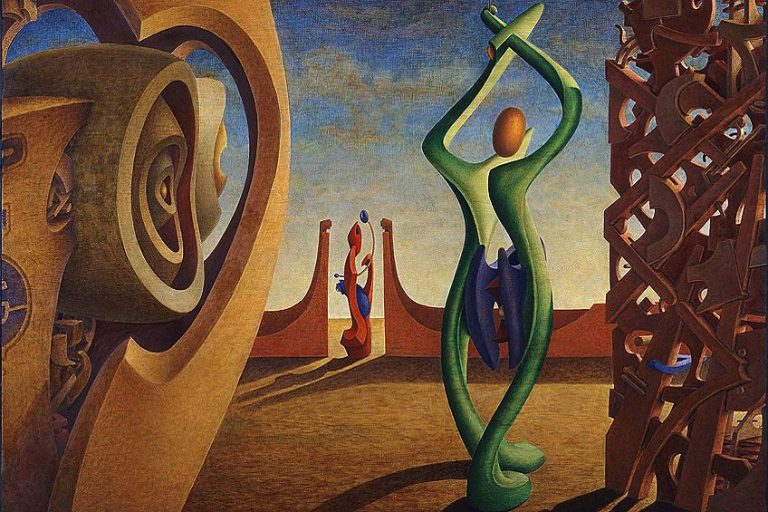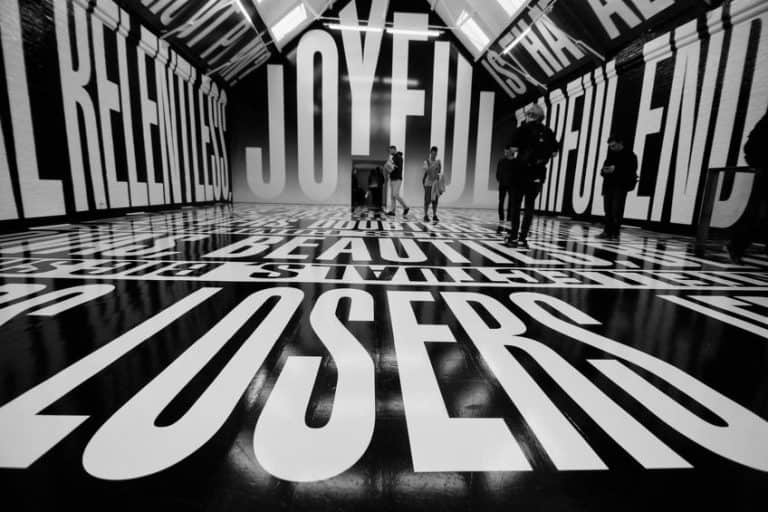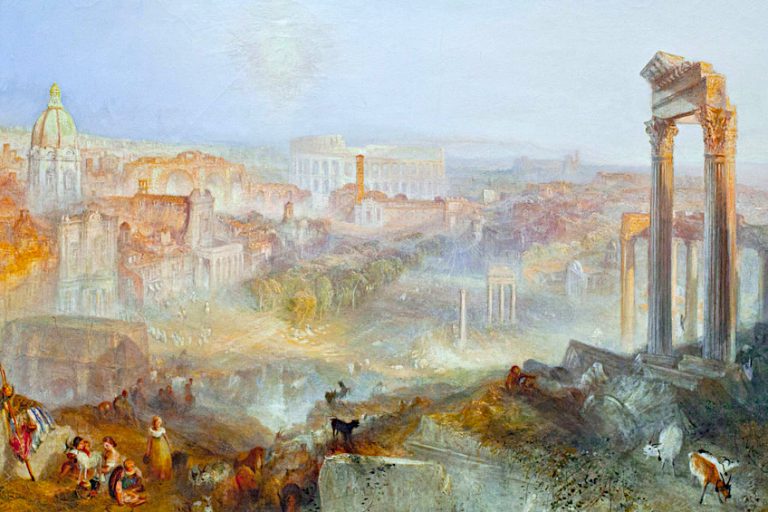Der Blaue Reiter – The Birth of Modern European Art
In the early 20th century, a group of visionary artists came together to form a groundbreaking artistic movement known as the “Blue Rider” or “Der Blaue Reiter” in German. Led by the pioneering Russian painter Wassily Kandinsky, this avant-garde collective embarked on a remarkable journey that would forever alter the course of modern art. Deriving its name from the symbolic power of the color blue and the image of a rider, this movement stood as a testament to the artists’ shared quest to explore the profound connections between art, spirituality, and the human soul. In this article, we delve into the fascinating world of Der Blaue Reiter, exploring its origins, key figures, and the transformative impact it had on the ever-evolving landscape of artistic expression.
The Avant-Garde Revolution: Der Blaue Reiter and the Birth of Modern Art
At the dawn of the 20th century, a seismic shift was underway in the world of art. In the midst of sweeping cultural and societal changes, a group of innovative artists came together to form the seminal avant-garde movement known as “Der Blaue Reiter,” or the “Blue Rider” in English. Led by the Russian painter Wassily Kandinsky (1866-1944) and his German counterpart Franz Marc (1880-1916), this artistic collective embarked on a remarkable journey that would forever alter the course of modern art.
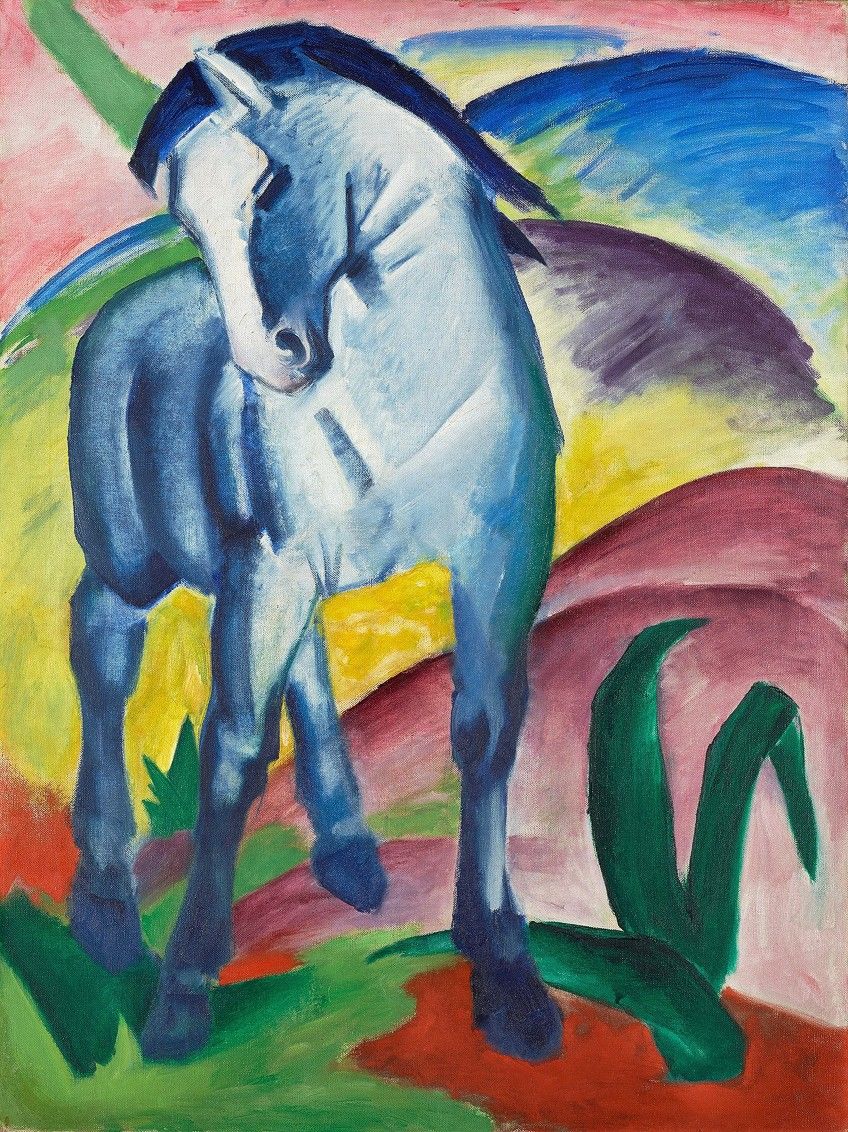
Origins and Influences
In the early 20th century, Munich, Germany, served as a melting pot of cultural and intellectual fervor, providing the perfect backdrop for the birth of an artistic revolution. Der Blaue Reiter, or the Blue Rider, emerged in 1911, at a time when the world teetered on the precipice of immense change, poised on the brink of World War I. Against this backdrop of societal upheaval, the founders of the Blue Rider movement, including luminaries like Wassily Kandinsky, Franz Marc, August Macke (1887-1914), and Gabriele Münter (1877-1962), sought to break free from the shackles of artistic tradition that had dominated the creative landscape for centuries.
At the heart of the Blue Rider ideology was a fervent rejection of academic conventions, which had, for generations, dictated the parameters of acceptable art. The movement’s luminaries believed that these constraints stifled artistic innovation and hindered the exploration of new realms of creativity. Consequently, they longed for artistic liberation, a quest that would come to define their avant-garde approach.
One of the pivotal influences on Der Blaue Reiter was the Symbolist movement, a powerful artistic current that sought to convey the ineffable through the language of art.
Symbolism’s proponents utilized symbols and metaphors to penetrate the depths of the human psyche, offering viewers a glimpse into the unseen and unspoken. It was within this realm of symbolism that Wassily Kandinsky found profound inspiration. He was particularly intrigued by the concept of synesthesia, a neurological phenomenon that suggested a sensory crossover, wherein one could experience music visually and vice versa. This fascination served as a significant catalyst for the development of abstract art within the Blue Rider, as Kandinsky and his contemporaries strove to transcend traditional artistic boundaries and convey emotions through colors, shapes, and forms.
Moreover, the Blue Rider movement drew from a wide array of eclectic influences. The members of this avant-garde collective sought inspiration from the primitive art of various cultures, including African and Oceanic art, as well as non-Western traditions such as the aesthetics of Japanese woodblock prints. These influences provided a fresh perspective that challenged the Eurocentric norms of the time, allowing for a more diverse and inclusive approach to art.
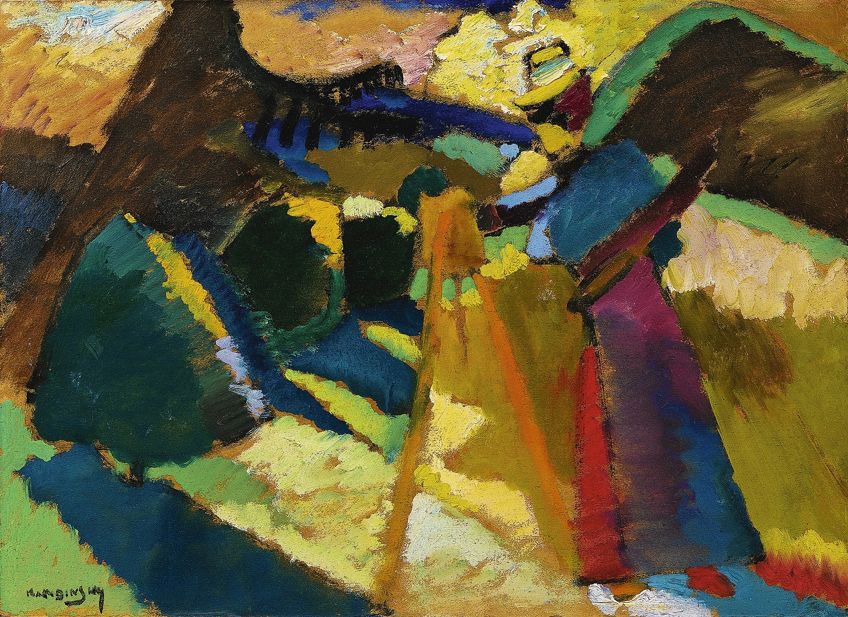
Furthermore, the artists of Der Blaue Reiter looked to their contemporaries in the art world who were also pushing the boundaries of convention. The Fauvist and Cubist movements, led by artists like Henri Matisse (1869-1954) and Pablo Picasso (1881-1973), were revolutionizing artistic expression through bold use of color and the deconstruction of form. The Blue Rider movement embraced this spirit of innovation and incorporated elements of these movements into their own artistic experiments.
The eclectic mix of these influences formed a rich tapestry of ideas, concepts, and techniques that set the stage for the Blue Rider’s avant-garde experiments. In Munich, they found a fertile ground where art, philosophy, and cultural diversity converged, providing the perfect environment for the birth of a movement that would go on to reshape the artistic landscape in ways that were both radical and enduring. Der Blaue Reiter was not merely a reaction to the restrictive conventions of the past but a celebration of the boundless possibilities of the future, forever altering the trajectory of modern art.
The Spiritual Connection: Der Blaue Reiter’s Transcendent Vision
Central to the revolutionary spirit of Der Blaue Reiter, or the Blue Rider, was the fervent embrace of the spiritual and the exploration of the inner, emotional realms of the human experience. The artists of this avant-garde movement believed that art possessed a transcendent power capable of connecting with viewers on a profoundly spiritual level.
Led by Wassily Kandinsky, whose groundbreaking work Concerning the Spiritual in Art (1912) stands as a testament to this belief, the Blue Rider artists embarked on a quest to unlock the secrets of the human soul through the language of color, form, and abstraction.
The Transcendent Power of Art
In Concerning the Spiritual in Art, Kandinsky articulated the group’s spiritual aspirations and underscored the importance of transcending the material world through artistic expression. He advocated for the idea that art could communicate profound emotions, serving as a conduit to higher truths and spiritual revelations. For the Blue Rider artists, art was not just an aesthetic pursuit; it was a profound, even mystical, journey into the human psyche and the universal essence of existence.

The belief in art’s spiritual potential was rooted in the notion that visual elements such as color, form, and abstraction could evoke emotions, thoughts, and sensations that transcended the confines of the tangible world. In this way, the artists sought to establish a profound connection between themselves and the viewer, inviting them to delve into the depths of their own consciousness and engage with art on a deeply personal and spiritual level.
Breaking Free from Representation
To achieve their spiritual aspirations, the artists of Der Blaue Reiter felt the need to break free from the constraints of traditional representation and realism, which they believed limited the depth of artistic expression. The representation of physical reality was seen as a barrier to accessing the spiritual and emotional dimensions that art could tap into. Wassily Kandinsky, in particular, emerged as a pioneering figure in this regard. He developed a radical new approach to painting, one that revolutionized the course of art history. In his quest to transcend representation, Kandinsky turned to abstraction as a means of conveying the ineffable.
In his abstract compositions, colors and shapes became the language through which emotions and ideas were expressed, as seen in works like Improvisation 28 (1912) and Composition VII (1913).
These works, devoid of recognizable objects or figures, represented a significant departure from conventional art. Kandinsky’s abstraction allowed him to explore the inner workings of the human psyche, pushing the boundaries of artistic expression beyond the material world. His compositions, sometimes described as symphonies of color and form, were akin to visual music, engaging the viewer’s senses and emotions in a manner that transcended traditional representational art.
Personal Journeys of Interpretation and Emotion
The Blue Rider’s emphasis on the spiritual connection between art and the viewer challenged audiences to embark on their own personal journeys of interpretation and emotion. In their quest to unlock the mysteries of the soul and the transcendent power of art, the artists invited viewers to engage with their work on a deeper, more introspective level.

Der Blaue Reiter’s exploration of the spiritual in art not only paved the way for abstract art but also fostered a newfound appreciation for the emotional and intellectual depth that art could convey. It redefined the role of the artist as a spiritual guide, leading viewers into the uncharted territory of the human psyche and the boundless realm of the soul.
Unlocking the Mystique: Technical Characteristics of Der Blaue Reiter Artworks
While Der Blaue Reiter movement was primarily known for its philosophical and spiritual approach to art, its technical characteristics played a pivotal role in reshaping the artistic landscape. The artists of Der Blaue Reiter embraced a diverse range of methods and techniques that were, in many ways, as revolutionary as their ideas.
This helped in contributing to the movement’s enduring impact on the world of art.
Bold Use of Color
Color was a central element in Der Blaue Reiter artworks. Artists from the movement were renowned for their bold and expressive use of color. While the movement’s name, “The Blue Rider,” suggests a particular affinity for the color blue, their palette was far more diverse. Vibrant and vivid colors were employed to convey emotions and create a sense of transcendence.

Wassily Kandinsky, for instance, believed that colors possessed their own unique spiritual and emotional qualities. He developed a color theory that associated blue with the spiritual and the profound, while red was linked to passion and warmth, and yellow to the intellectual and joyful. These color associations added depth and meaning to their works, as seen in Kandinsky’s Yellow-Red-Blue (1925).
The Use of Symbolism
While Der Blaue Reiter artworks were largely non-representational, symbolism played a significant role in the movement’s technical characteristics. Symbols and metaphors were used to tap into the depths of the human psyche and convey profound emotions and ideas. The Almanac of the movement, for instance, featured cover art designed by Wassily Kandinsky, which incorporated symbolic elements. The artwork for the 1912 edition, featuring a rider and a blue horse against a vibrant background, encapsulated the movement’s essence, symbolizing the spiritual journey and the quest for artistic liberation.
This use of symbolism allowed the artists to communicate on a level that transcended the visual, inviting viewers to delve into the mysteries and intricacies of their works.
Varied Techniques and Mediums
The technical characteristics of Der Blaue Reiter artworks were not confined to painting alone. The movement’s artists explored a wide array of techniques and mediums, reflecting their holistic approach to creativity. In addition to painting, they ventured into printmaking, sculpture, and other forms of visual and performing arts. Wassily Kandinsky, for instance, experimented with woodcuts and lithographs, pushing the boundaries of traditional artistic practices. Their multifaceted exploration of different mediums added layers of complexity and depth to their body of work, as well as extending the influence of the movement to various artistic disciplines.
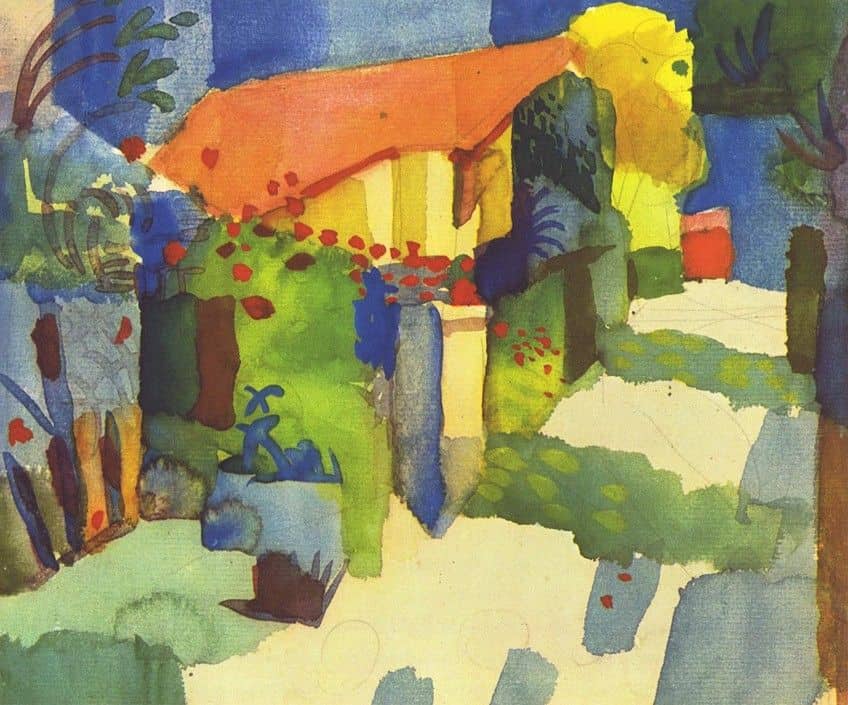
The Blue Rider Almanac: A Manifesto of Artistic Revolution
In the annals of art history, there are few publications as influential and groundbreaking as the Blue Rider Almanac. Published in 1912 by Der Blaue Reiter group, this seminal work served as a vivid manifesto of their artistic principles and a vivid testament to their avant-garde spirit. The Almanac’s pages, filled with diverse contributions from the movement’s members and influential artists and thinkers of the era.
These include Paul Klee (1879-1940), Marc Chagall (1887-1985), and Arnold Schönberg (1874-1951), who represented a significant departure from the artistic norms of the time.
A Collaborative and Diverse Endeavor
The Blue Rider Almanac was a collaborative effort that exemplified the movement’s commitment to diversity and inclusivity. Its pages were graced by a myriad of artistic voices, each contributing to a rich tapestry of ideas and expressions. The contributors hailed from various corners of the art world, including painters, musicians, poets, and philosophers, reflecting the movement’s interdisciplinary approach to creativity.

In addition to the Der Blaue Reiter members, who were at the forefront of the avant-garde movement, luminaries from across Europe lent their voices and talents to the Almanac. This convergence of artistic minds not only showcased the movement’s desire to break with the artistic past but also highlighted the global impact and reach of their ideas.
Artistic Manifestos and Philosophical Discourses
Within the pages of the Blue Rider Almanac, a diverse array of articles and manifestos articulated the movement’s philosophy and ideals. These writings were not mere artistic declarations; they represented a profound challenge to established artistic norms and a clarion call for the liberation of creative expression. Wassily Kandinsky’s influential essay On the Problem of Form (1912) was a cornerstone of the Almanac. In it, Kandinsky expounded upon the spiritual and emotional power of abstraction, emphasizing the need to move beyond the confines of representation.
This piece laid the theoretical groundwork for the development of non-objective art, a concept that would come to define the movement.
Visual Art and Imagery
The Almanac was not limited to written discourse; it was also a visual feast. Its pages featured a diverse array of images, showcasing artworks that resonated with the movement’s principles. These visual representations served as a testament to the power of art to communicate profound emotions and ideas. The cover artwork, often designed by Wassily Kandinsky, encapsulated the movement’s essence and played a symbolic role. The cover of the 1912 edition, for instance, featured a striking design that juxtaposed a rider and a blue horse against a vibrant background. This imagery was laden with symbolism, representing the spiritual journey and the quest for artistic liberation that was at the core of Der Blaue Reiter’s philosophy.
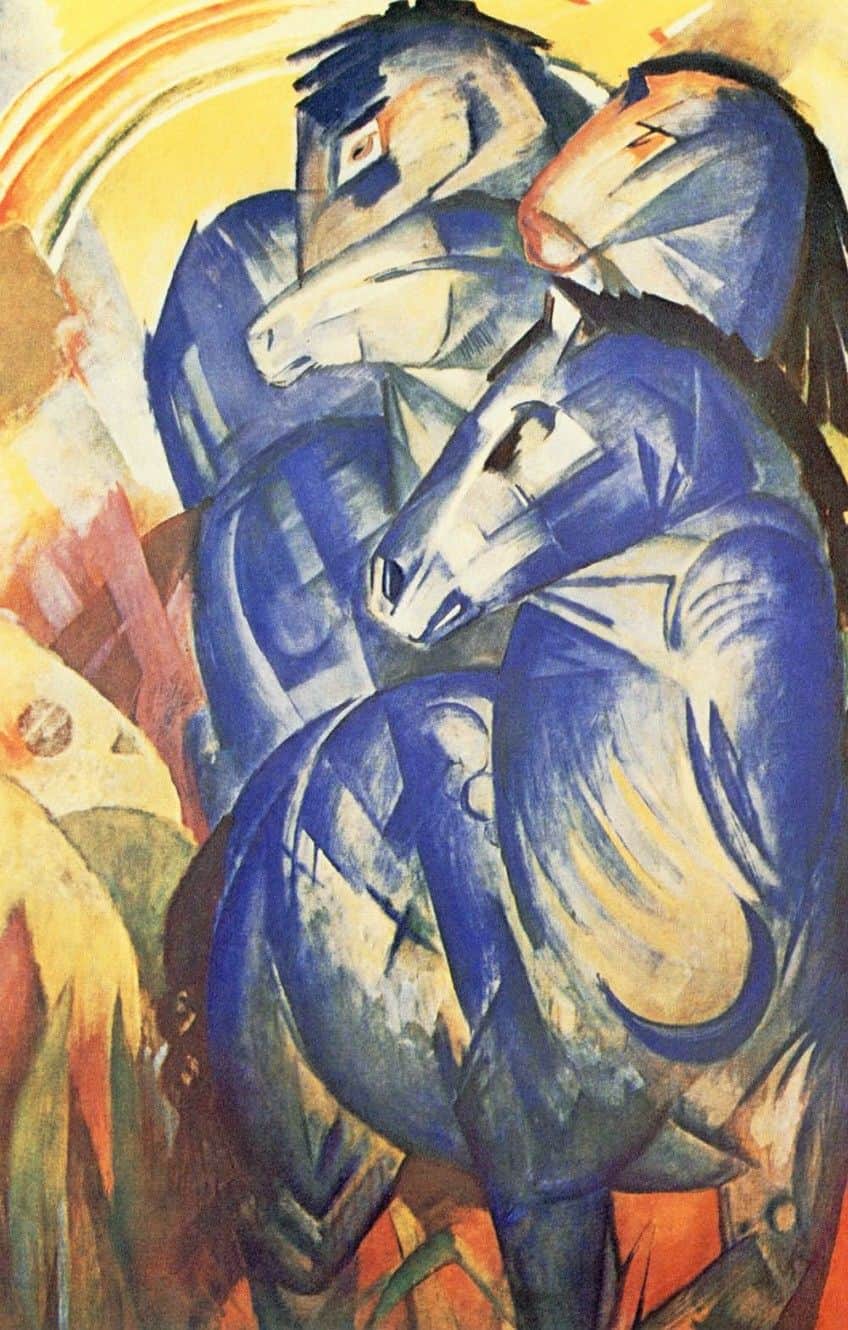
Artist Abstract: Wassily Kandinsky
| Date of Birth | 16 December 1866 |
| Date of Death | 13 December 1944 |
| Place of Birth | Moscow, Russia |
| Nationality | Russian |
| Art Movement | Expressionism, Blue Rider, and Abstract Art |
| Mediums Used | Oil painting, watercolor, printmaking, and mixed media |
| Famous Artworks |
|
Wassily Kandinsky was a pioneering figure in the world of modern art, renowned for his revolutionary contributions to abstract and non-objective art. Born in Moscow, Russia, Kandinsky’s early career was rooted in the academic traditions of figurative painting. However, his journey took a transformative turn when he encountered the vibrant art scenes of Munich and Paris. Kandinsky’s enduring legacy is marked by his role in shaping the course of modern art, laying the groundwork for movements like Abstract Expressionism, and inspiring generations of artists to explore the profound connections between art, spirituality, and the human soul.
His work continues to captivate and inspire art enthusiasts worldwide, serving as a testament to the boundless possibilities of artistic expression.
Visual and Conceptual Analysis of Wassily Kandinsky’s Composition VII (1913)
| Artist | Wassily Kandinsky (1866 – 1944) |
| Date | 1913 |
| Medium | Oil on canvas |
| Dimensions (cm) | 200.6 × 302.2 |
| Current Location | State Tretyakov Gallery, Moscow, Russia |
Wassily Kandinsky’s Composition VII is a masterpiece that encapsulates the essence of the Der Blaue Reiter movement and its groundbreaking approach to abstract art. Created in 1913, this monumental canvas is a complex interplay of color, form, and spirituality. Let’s embark on a detailed analysis of this iconic artwork. The first striking feature of Composition VII is the vibrant and dynamic use of color. Kandinsky believed that colors possessed spiritual and emotional qualities, and this is evident in the painting. The palette is rich and varied, with bold hues dominating the composition. Brilliant shades of red, blue, yellow, and green are juxtaposed with earthy tones of brown and black. The use of color is expressive and emotional, with each hue conveying a distinct mood and energy.

The canvas is a whirlwind of forms and shapes. Geometric and organic shapes intermingle, creating a sense of movement and dynamism. Kandinsky’s bold use of abstract shapes challenges traditional artistic norms, as there are no recognizable objects or figures in the painting. This allows viewers to engage with the work on a purely emotional and sensory level. Composition VII is a kaleidoscope of forms and colors. The composition is non-linear and lacks a focal point, inviting viewers to explore the canvas freely. The arrangement of shapes and lines appears spontaneous as if guided by a spiritual force. The overall structure is intricate, with overlapping forms creating depth and visual complexity.
Composition VII epitomizes the movement’s commitment to abstraction. Kandinsky’s rejection of representation and emphasis on non-objective art reflects his belief in the power of art to communicate on a spiritual level. The painting does not seek to depict physical reality but rather to tap into the viewer’s inner world and emotions.
Central to the Der Blaue Reiter philosophy was the spiritual connection between art and the human soul. Kandinsky’s work embodies this principle.
The title Composition VII hints at a musical connection, and Kandinsky often referred to his paintings as “compositions” or “improvisations,” drawing parallels between art and music. The painting’s dynamic and harmonious interplay of colors and forms resembles a symphony, inviting viewers to experience art as a spiritual journey. The energetic quality of Composition VII is palpable. Kandinsky’s use of color and form conveys a sense of emotional intensity and movement. The forms seem to dance and interact with one another, creating a visual and emotional crescendo. The painting captures a moment of profound creative expression, a moment where the artist’s inner world and spirituality are laid bare on the canvas.
Legacy and Impact
Der Blaue Reiter left an indelible mark on the course of art history. Its members were instrumental in advancing the cause of abstraction, paving the way for the development of non-representational and non-objective art. Their exploration of color, form, and spirituality became a foundational influence on movements like Abstract Expressionism and even contemporary art practices.
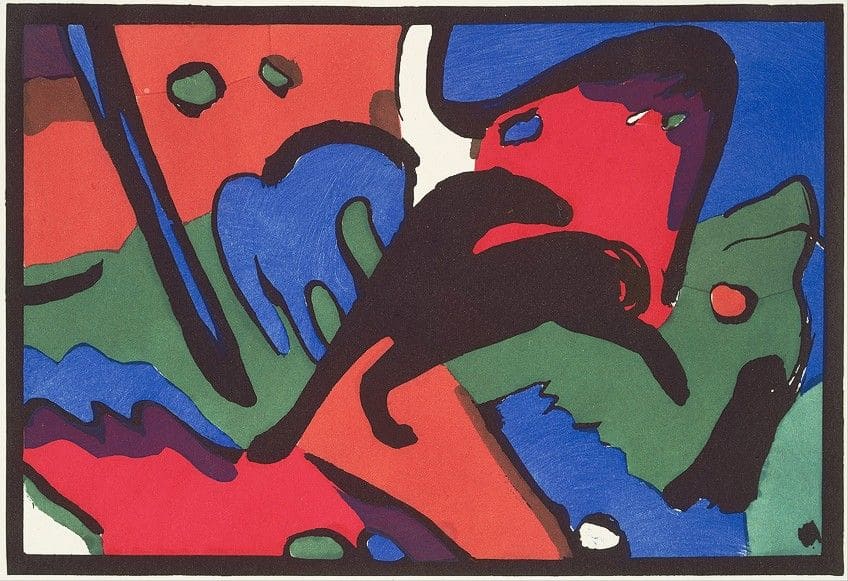
Furthermore, Der Blaue Reiter demonstrated the powerful connection between art and culture, advocating for art as a vessel for social and political change. This artistic movement was not confined to the canvas but extended into music, theater, and architecture, fostering a holistic approach to creativity and the search for a universal language of expression.
In conclusion, the Blue Rider, under the pioneering spirit of artists like Wassily Kandinsky, has left an indelible mark on the world of art as a revolutionary avant-garde movement. Der Blaue Reiter was not merely a departure from artistic tradition, but a profound exploration of color, form, and spirituality. The movement’s commitment to abstraction and its emphasis on the spiritual and emotional dimensions of art continue to inspire and influence generations of artists. Wassily Kandinsky and his contemporaries dared to venture into uncharted artistic territory, embracing the boundless possibilities of creativity. Their legacy endures as a testament to the enduring power of art to challenge conventions, transform perspectives, and lead viewers on journeys of profound spiritual and emotional exploration.
Frequently Asked Questions
Why Was the Blue Rider Important?
The Blue Rider, led by artists like Wassily Kandinsky (1866 – 1944) and Franz Marc (1880 – 1916), was critically important because it marked a pivotal moment in the history of art. This avant-garde movement was instrumental in advancing the cause of abstraction, pioneering the development of non-representational and non-objective art. The Blue Rider artists challenged traditional artistic norms, championing the use of color, form, and symbolism as a means of expressing profound emotions and ideas. Their emphasis on the spiritual and emotional dimensions of art reshaped the course of modern art, leaving an enduring legacy that continues to inspire and influence artists and art movements to this day.
What Are the Blue Rider Paintings About?
Blue Rider paintings, associated with the avant-garde movement of the same name, are primarily about breaking free from the confines of representational art. The artists of the Blue Rider, like Wassily Kandinsky and Franz Marc, believed in the power of abstraction to communicate profound emotions and ideas. Their works explore the interplay of color, form, and spirituality, aiming to tap into the viewer’s inner world and evoke a sense of transcendence. These paintings are about the spiritual and emotional dimensions of art, challenging traditional artistic norms and inviting viewers to engage with the artwork on a deeply personal and non-literal level. In essence, Blue Rider paintings are a celebration of artistic liberation and the boundless possibilities of creativity.
What Famous Artists Were Part of the Blue Rider Movement?
The Blue Rider movement boasted a roster of influential and celebrated artists who left an indelible mark on the art world. Notable figures associated with the Blue Rider included Wassily Kandinsky (1866 – 1944), Franz Marc (1880 – 1916), August Macke (1887 – 1914), and Gabriele Münter (1877 – 1962). These artists were at the forefront of the movement, pushing the boundaries of artistic expression and championing abstraction as a means to convey profound emotions and ideas. Together, they formed a dynamic artistic collective that challenged traditional norms, leaving a lasting legacy in the world of avant-garde art.
Which Famous Paintings Came Out of the Blue Rider Movement?
The Blue Rider movement produced several iconic and influential paintings that have left an enduring mark on the art world. One of the most famous artworks to emerge from the movement is Wassily Kandinsky’s Composition VII, created in 1913. This masterpiece is a quintessential example of non-objective art and reflects the movement’s commitment to abstraction and spirituality. Another notable work is Franz Marc’s The Tower of Blue Horses (1913), which, though currently missing, remains an emblematic piece of the Blue Rider movement. These artworks, along with many others by artists associated with the movement, continue to be celebrated for their groundbreaking approach to color, form, and the spiritual dimensions of art.
Nicolene Burger is a South African multi-media artist, working primarily in oil paint and performance art. She received her BA (Visual Arts) from Stellenbosch University in 2017. In 2018, Burger showed in Masan, South Korea as part of the Rhizome Artist Residency. She was selected to take part in the 2019 ICA Live Art Workshop, receiving training from art experts all around the world. In 2019 Burger opened her first solo exhibition of paintings titled, Painted Mantras, at GUS Gallery and facilitated a group collaboration project titled, Take Flight, selected to be part of Infecting the City Live Art Festival. At the moment, Nicolene is completing a practice-based master’s degree in Theatre and Performance at the University of Cape Town.
In 2020, Nicolene created a series of ZOOM performances with Lumkile Mzayiya called, Evoked?. These performances led her to create exclusive performances from her home in 2021 to accommodate the mid-pandemic audience. She also started focusing more on the sustainability of creative practices in the last 3 years and now offers creative coaching sessions to artists of all kinds. By sharing what she has learned from a 10-year practice, Burger hopes to relay more directly the sense of vulnerability with which she makes art and the core belief to her practice: Art is an immensely important and powerful bridge of communication that can offer understanding, healing and connection.
Nicolene writes our blog posts on art history with an emphasis on renowned artists and contemporary art. She also writes in the field of art industry. Her extensive artistic background and her studies in Fine and Studio Arts contribute to her expertise in the field.
Learn more about Nicolene Burger and the Art in Context Team.
Cite this Article
Nicolene, Burger, “Der Blaue Reiter – The Birth of Modern European Art.” Art in Context. January 31, 2024. URL: https://artincontext.org/der-blaue-reiter/
Burger, N. (2024, 31 January). Der Blaue Reiter – The Birth of Modern European Art. Art in Context. https://artincontext.org/der-blaue-reiter/
Burger, Nicolene. “Der Blaue Reiter – The Birth of Modern European Art.” Art in Context, January 31, 2024. https://artincontext.org/der-blaue-reiter/.




